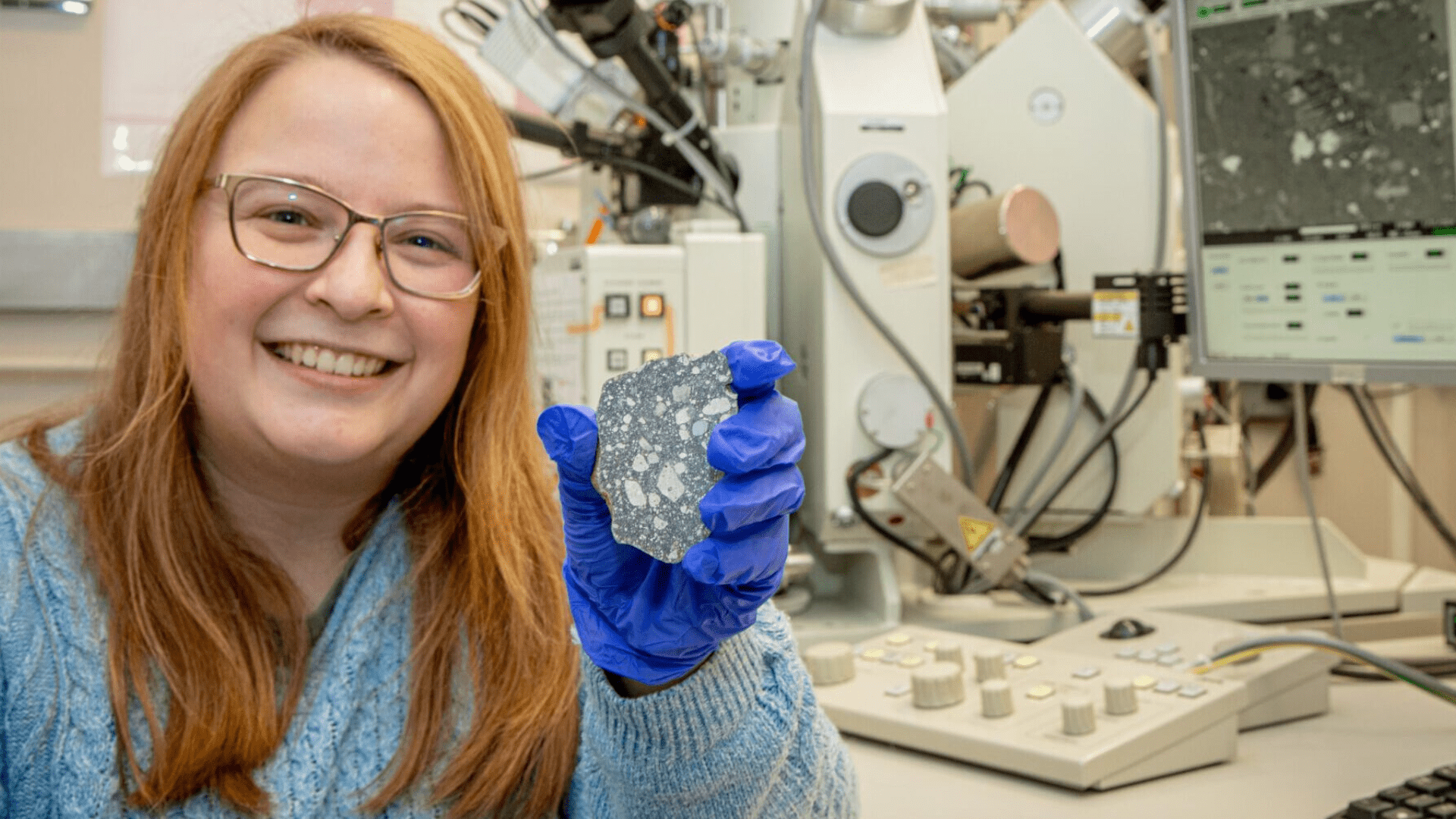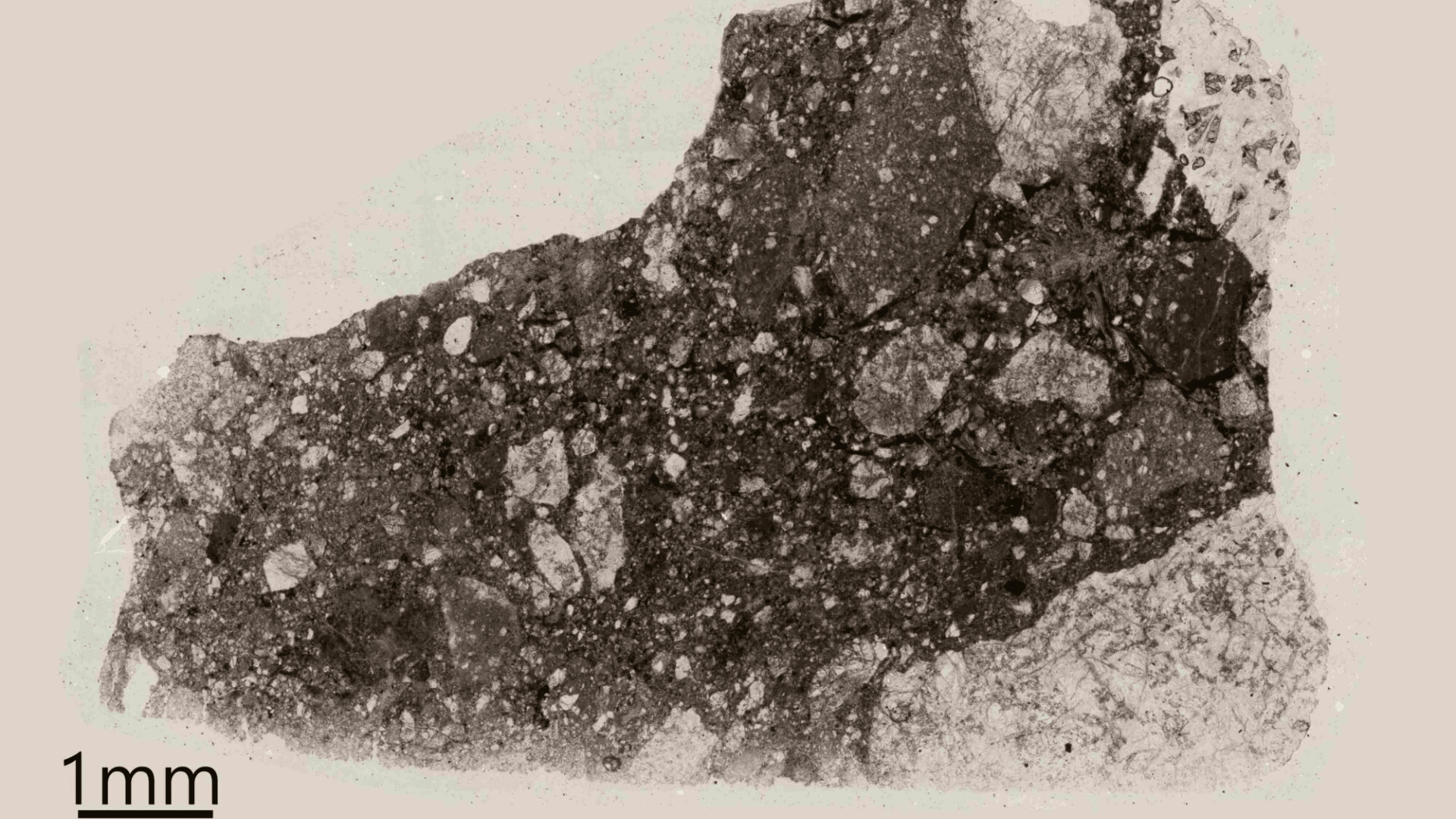When we think of the moon, we think of a giant rock. In science class, it’s usually described and portrayed as very dry. While that is true, that may not have been the case about 4 billion years ago. Researchers believe the Moon’s crust held far more water than previously thought.
Water-Bearing Mineral

A Western University postdoctoral researcher, Tara Hayden, is the person who discovered the history of water on the moon. A study outlines her discovery. Now Hayden is a PhD student at The Open University in England. She was examining a meteorite from the Moon, she found a water-bearing mineral called apatite. It’s the first time this mineral was discovered in a sample of the early lunar crust. The findings open new doors to the history of water on the Moon. Findings suggest that there was once more water in the crust than previously thought. Because of the discovery, a more complex history of this stage of the moon is revealed.

Gordon Osinski works with Hayden and is a planetary geologist. He said, “The discovery of apatite in the Moon’s early crust for the first time is incredibly exciting – as we can finally start to piece together this unknown stage of lunar history.”
Hayden added, “Lunar meteorites are revealing new, exciting parts of the Moon’s evolution and expanding our knowledge beyond the samples collected during the Apollo missions.” Samples from the Apollo mission are described as “volatile-poor” which is why researchers previously concluded that the moon is bone dry.
Apatite
Finding the mineral apatite changes how we think of the moon’s past. It takes us back to about 4.5 billion years ago to the early stages of the moon’s lifecycle. The meteorite that Hayden is studying wasn’t immediately identified as such. Originally, it was being examined as a rock sample for a collector. After the revelation came about, the focus went to the apatite found in the meteorite. Apatite is found in almost all lunar rock types except for glass beads and ferroan anorthosites. Ferroan anorthosites are from the earliest stages of the lunar life which is between 4.3 and 4.5 billion years ago. Hayden’s meteorite is from the ferroan anorthosite rock group and now allows researchers to examine an unknown stage in the lunar evolution for the first time.
Mahesh Anand is Hayden’s lead supervisor at The Open University. He stated, “Unraveling the history of water in the earliest-formed lunar crust approximately 4.5 billion years ago is important for improving our understanding of the origin of water in the Solar System.”
Future moon missions
Hayden’s discovery comes at the perfect time. More importantly, with the upcoming NASA’s Artemis lunar missions. Artemis II is set for September 2025 and will send a crew of four to do a flyover of the Moon to make sure all systems are in check. That sets up a mission in 2026, Artemis III, where the crew will step foot on the Moon. The goal for the Artemis III mission, which will put the first woman and person of color on the moon is observations, samples, and data collection.




